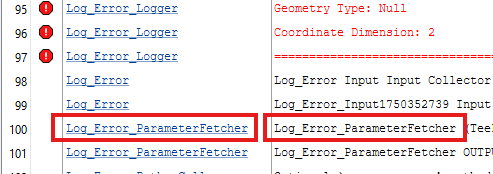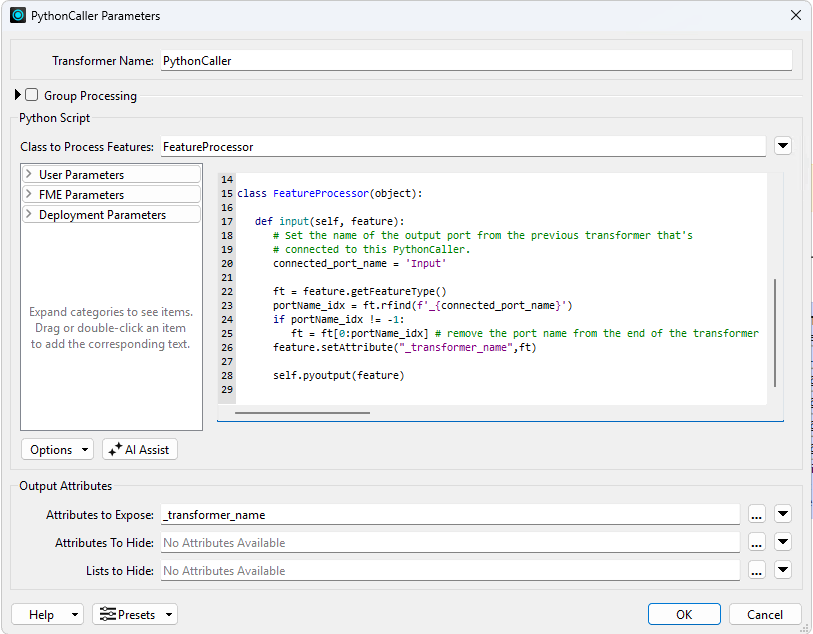Is there any way to get the “path” of a transformer so that it can be reported for a custom error logging solution. The standard FME log file has this information but I can’t find any way of getting at it inside a workspace.
For example, in the image below we can see log lines being reported from a ParameterFetcher transformer which is inside the Log_Error custom transformer.

If I could even just get the name/instance of the custom transformer that would be helpful but something really useful would be to have access to the <prior> transformer.
I’ve seen some other posts on this topic which talk about hard-coding log messages but it would be nice to have a more automated approach and those posts are all from before Safe changed the way log files work to include the links to the transformers….
I guess what I’m really looking for is access to something like the FME equivalent of a stack trace from any point within a workspace.












